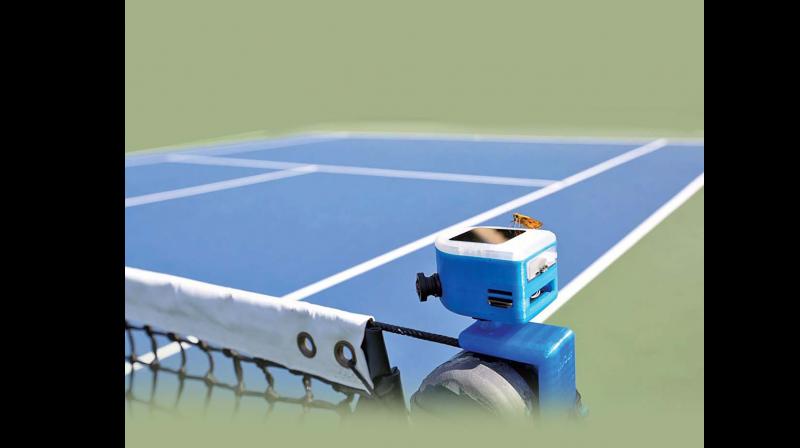Net point: Umpires out!
In/Out is a court camera that uses artificial intelligence to make line calls and eradicates acrimony at tennis games.

You can’t be serious? That’s an iconic question immortalised by a certain John McEnroe, whose on-court arguments with umpires are part of tennis folklore. The short-tempered former World No. 1 had kicked up quite a racket at matches back in the ’80s.
Fast forward to the current times and Big Mac, who still hits a few tennis balls at a non-professional level, would be happy with In/Out, a court camera that uses artificial intelligence to make line calls and eradicates acrimony at tennis games.
The auto umpire has been created by Gregoire Gentil, a Frenchman based in USA. The $200 gadget operates on a battery with a back up of two hours; calibrates the court quickly and sends out “in” and “out” flashes on a tiny screen on top of it while sitting on the edge of the net and eliminates foul play during friendly games.
However, this is not for professionals as experts can’t see the device tracking the ball accurately. The Hawk Eye technology that is presently used at all the big tournaments is not bang on either. The more cameras they use, the lesser the margin of error but there still is one. If there are 10 cameras the margin of error is .2 per cent, if there are 15 cameras it is .1 per cent. Even with 20 cameras tracking the ball, there still is a margin of error. Considering the fact that with Hawk Eye — that has so many high-end cameras — you still have a margin of error, there is no way this machine would last the game, tennis players feel.
Insiders inform the image that shows up on the giant screen on a player’s challenge arising out of a disputed point in Hawk Eye is computer generated taking into account shots from all cameras. It’s only an estimation of how much of the ball is touching the line below. Usually it’s only the base, about 10 per cent even as the cameras pick the entire ball from the top. The landing a
lso depends on the force with and the angle at which the ball is hit because it is bound to either brush past the surface or land with a thump depending on the power packed into the stroke. Back to the gizmo, one thing it assures is that there is no hanky-panky going on with no human involvement at all and the machine making all the calls. That should be ideal for recreational games at the club or amateur level though. Questions however crop up on its ability to detect foot faults as the players serve but, are we serious?

